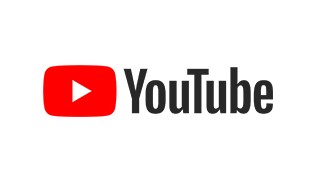YouTube’s Roaring Successes Can’t be Copied and Pasted, But They can Inspire
YouTube’s offering is highly strategic—and continues to evolve to meet user appetites

With streaming and social media platforms alike striving to keep the attention of audiences all over the world, one platform in particular continues to lead the pack: YouTube.
Second only to Google in terms of global monthly visits, the site’s unique proposition has always been as a platform for user-generated content. It is testament to the success of this offering that it continues to pull in billions of users every month.
Despite its overwhelming success, YouTube understands that the world of content evolves quickly. Its viewers are loyal to the content, not the platform, hence its expansion into the competitive Advertising-based Video on Demand (AVOD) market.
And it’s made quite the entrance, to say the least: with the addition of YouTube's AVOD arm last year, the site is now officially the top streaming platform in Europe.
With this strategic extension, YouTube now not only gives streaming players like Pluto TV and Tubi a run for their money, but also continues to outpace social channels like Facebook and TikTok in monthly visits. By pushing visitors through from user-generated content to its premium films and shows, it keeps them firmly within its own ecosystem, meaning its value will only increase.
With the variety of its content offered so obviously being a core element of its ongoing success, one would instinctively urge social competitors to follow the same route. But is this as simple as it seems? Can YouTube’s winning formula really be copied and pasted just like that?
YouTube’s Unique Offering
YouTube’s offering is highly strategic—and continues to evolve to meet user appetites.
While it was originally known for its long-form content, it has adapted to include short-form videos through the introduction of YouTube Shorts, which are now being watched by over 1.5 billion logged-in users every month—an impressive number considering that many viewers without user IDs will also be consuming this content.
And it’s clear that audiences are happy with the level of variety offered; 87% of people have watched at least 4 of the content formats provided by YouTube over the past 12 months.
This is especially true of Gen Z, 71% of whom report valuing the accessibility of being able to watch different video formats all on one platform.
But, as well as content form, YouTube is also attuned to how modes of delivery can help drive viewing habits. The recent development of its multi-language audio feature, powered by strategic partnerships with AI dubbing companies such as Papercup, allows brands and creators to upload dubbed videos so that viewers can watch in their preferred language.
This improves engagement and meets the needs of new, international audiences keen to consume long and short-form content in their native language. It increases YouTube’s global presence at the same time.
Pioneering Premium
Why premium content? Such a bold move may make other platforms consider making similar plays—and with good reason, given the success that YouTube has seen.
But the fact that YouTube is especially well-suited to hosting paid movies and TV shows can’t be ignored.
Unlike Facebook, Instagram or TikTok, the platform is not heavily associated with the social element. It understands that its users predominantly turn to the platform for content consumption rather than active engagement with others—it’s this understanding of user interests that makes the move towards AVOD so astute.
As its strategy evolves, it therefore remains to be seen how companies will come to interact with the platform. However, by catering to different viewing habits, YouTube not only meets the needs of broader audiences, but draws in a wider pool of advertisers.
Can Other Platforms Catch Up?
Straddling both the ‘sit back and watch’ world of AVOD, as well as the click-fuelled domain of user-generated content is a tricky balance to strike.
And failure comes with a price. The recent drop-off in Threads users after an initial surge, is a good example of when blindly following the innovations of market leaders—in this case, Twitter/X—doesn’t pay off.
Rather than attempt to replicate the platform’s model, it’s likely more worthwhile for other players to nail their own niche.
Just look at TikTok’s success nailing the short-form consumer niche through initiatives like its creator marketplace. This has now drawn in over 8 million active TikTok creators, and is only going from strength to strength.
As other platforms look to build out robust ecosystems, they will have more success accounting for what’s unique about their audiences. Strategies that encapsulate and expand upon the interests of their users will always yield the best outcomes.
Copy That
YouTube’s expansion of content to include premium films and shows within its AVOD offering undoubtedly emerges as a vital element of its ongoing success.
For competitors looking to model audience growth on YouTube‘s strategy, they should look to YouTube’s push to make high value content globally available with the introduction of its MLA feature. This clear push to enable content to be consumed in as many languages as possible is where the greatest learnings lie.
Accommodating the needs of vast international audiences can seem daunting, but as YouTube’s viewing stats confirm, doing so pays dividends. Any platform able to challenge the giant in this area will make waves—and the world will be watching.
Get the TV Tech Newsletter
The professional video industry's #1 source for news, trends and product and tech information. Sign up below.
Jess Shemen is CEO and co-founder of UK-based AI-dubbing company Papercup. Prior to launching Papercup, Jess launched investment firm Octopus Investments, and also co-founded Deloitte Ventures, an internal technology incubator and Deloitte’s first equity investment arm focusing on early-stage enterprise startups.

